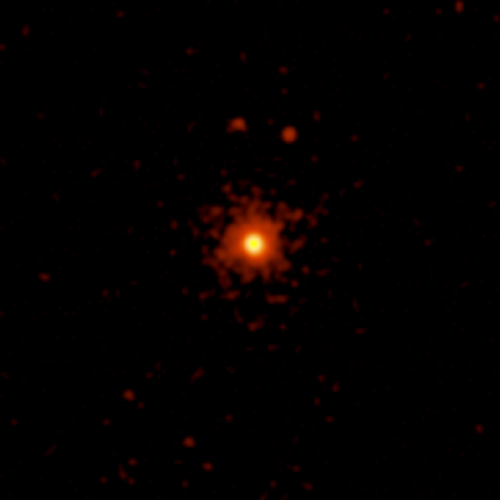Proxima Centauri: A red dwarf star 4 light years from the Sun.
Caption: X-ray observations of Proxima Centauri, the nearest star to the Sun, have shown that its surface is in a state of turmoil. Flares, or explosive outbursts occur almost continually. This behavior can be traced to Proxima Centauri's low mass, about a tenth that of the Sun. In the cores of low mass stars, nuclear fusion reactions that convert hydrogen to helium proceed very slowly, and create a turbulent, convective motion throughout their interiors. This motion stores up magnetic energy which is often released explosively in the star's upper atmosphere where it produces flares in X-rays and other forms of light. X-rays from Proxima Centauri are consistent with a point-like source. The extended X-ray glow is an instrumental effect. The nature of the two dots above the image is unknown - they could be background sources.
Scale: Image is 1.5 arcmin per side
Chandra X-ray Observatory ACIS image.
|


